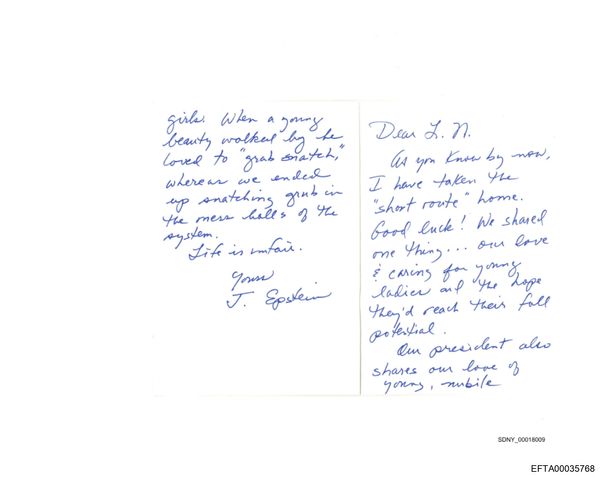
On the day that 22-year-old Tyler Robinson shot and the killed rightwing activist Charlie Kirk, prosecutors say, he texted his roommate to confess what he had done. While appearing to admit to the murder and describe how he was planning to retrieve his gun, he pivoted to mention why he had carved messages into the ammunition.
“Remember how I was engraving bullets? The fuckin messages are mostly a big meme,” Robinson texted, according to authorities.
Robinson’s shooting of Kirk has put the spotlight on the intersection of political violence and an increasingly nihilistic online world that promotes misinformation and extremism. It’s a confluence that raises fundamental questions about how internet culture influences both extremist attacks and how we understand them, at a time when some of the biggest online spaces are increasingly more divisive and less moderated.
Robinson appeared to spend much of his life on the internet and playing video games, with friends describing him as “terminally online”. He was active on Discord, a messaging platform popular among the gaming community, and as a teenager dressed up as internet memes for Halloween.
Bullet casings from the gun he allegedly fired were engraved with niche references and internet-speak – “notices bulge OwO what’s this”, a reference to a meme about sex within the online Furry subculture, “if you read this you are gay LMAO”, “Hey Fascist! CATCH!”, as well as the controller movements to use a special bomb in the popular video game Helldivers 2 and the lyrics to the antifascist song Bella Ciao, which has become popular among gamers after featuring in the game Far Cry 6.
In Robinson’s exchanges with his roommate, who he was also romantically involved with, he appeared to have been thinking of how the ironic messages would be received.
“If I see ‘uwu notices bulge’ on fox new [sic] I might have a stroke,” Robinson texted.
With the references, Robinson fits a modern trend of attackers leaving behind messages that not only show they are products of an online culture, but are in conversation with it. In recent years, a growing number of shooters have left behind writings, whether full manifestos or single-sentence posts online, that contain nihilistic in-jokes and references that aim to differentiate their extremely online cohort from the “normies” who will struggle to understand them.
The manifesto left behind by the neo-Nazi who killed 51 people at two mosques in Christchurch, New Zealand, in 2019 contained both extreme white nationalist ideology and “shitpost”-style ironic references to video games and podcasters. The man who opened fire at a supermarket in El Paso, Texas, that same year announced his killings on the message board 8chan, prompting users to create memes and encourage others to try to “beat their high scores” in body count.
Extremist mass killings at a supermarket in a predominantly Black area of Buffalo, New York, in 2022 and at a synagogue in Poway, California, in 2019 were both heavily versed in the language of fringe online forums. A multi-newsroom investigation in 2022 that pored over tens of thousands of messages from an international neo-Nazi extremist network found that the chats were inflected with memes and gaming slang as they planned to commit violence.
In addition to speaking to their online communities, attackers are also often in dialogue with each other, whether in some far-right circles where extremists celebrate individuals as “saints” with their own memorialized days or simply through copying elements of previous killings. As others have noted, Robinson’s writing on the bullet cases is similar to meme messages left on ammunition and firearms by the young shooter who attacked a Minneapolis Catholic school. It also echoes the engravings that the alleged United Healthcare CEO shooter Luigi Mangione is reported to have left on his bullets, which became a meme to the point it featured on shirts from a popular alt-fashion label.
Robinson’s engravings themselves don’t offer a cohesive explanation for Kirk’s killing. Prosecutors say Robinson told his roommate he shot Kirk because the conservative activist was spreading hatred. They also allege that his mother told investigators that her son had spent the previous year or so becoming “more political and had started to lean more to the left – becoming more pro-gay and trans rights oriented”.
But much about Robinson’s path to radicalization is still unclear. There is an enormous gulf between holding opposition to Kirk’s views and carrying out a targeted killing. And increasingly, experts say, the motivation of shooters, particularly young ones, don’t fit neatly into a traditional left-right spectrum but are shaped by the fractured, heavily online state of modern politics. Ignoring the messier nature of radicalization in lieu of fitting attackers into convenient boxes risks missing what actually drives people to commit acts of extremist violence.
The radicalization of being online
Instead of trying to find precise meaning in the irony soaked, trolling messages that attackers have left behind, extremism researchers argue that it’s often more useful to look at how online mediums are broadly shaping radicalization. In fact, some say that the current era of political violence differs from past incarnations specifically because of the way that social media and online communities have influenced and incentivized attackers.
Although technological influences are only one part of rising political violence – along with mental health issues, political polarization and the widespread availability of firearms in the US – extremism researchers are increasingly studying the evolving ways that social media platforms and online spaces can radicalize and isolate users.
In a 2023 paper for George Washington University’s Project on Extremism, Jacob Ware, a researcher described what he called a “third generation of online radicalization” that emerged in the late 2010s. Some of its characteristics include how meme culture helps radicalize and normalize attacks, as well as how precise ideology or affiliation with an organization becomes less important than lone acts of violence. The online culture around violence and extremism ends up blurring traditional lines of terrorism, Ware argues, as well as encourages making performative content to go along with attacks.
“Global grievances are acted upon with great fury in very local contexts – and yet, the main audience is often online,” Ware writes.
The growth of social media and erosion of previous gatekeepers have also left it unclear how to counter the spread of online radicalization, especially given social media platforms’ shift towards shirking responsibility for hosting violent and extreme content. What was once the generally accepted policy among media outlets and platforms to not share attackers’ manifestos, part of a public health argument from researchers to avoid copycats, has degraded as social media has given way to amateur sleuths posting every element of someone’s digital footprint for clues. And as messages and memes from attackers spread more easily, they also in turn generate more posts riffing on the violence and turning it into content. It is a particularly dark function of an industry that has built its growth through algorithmically pushing politically divisive and extremist content.
The result is that while online culture has enmeshed itself into extremism and political violence, previously secluded parts of the extremist internet culture have increasingly infected the everyday internet. The use of ironic humour connected to violence and extremism is not unique to the digital age – an essay from 1944 once discussed how antisemites amused themselves with flippant hateful statements – but it has become an incredibly pervasive part of the online experience. Ideologies and memes that would have once been relegated to obscure comment boards and extremist websites are now essentially the native tongue of the internet and distributed through mainstream social media platforms.
Kirk himself was a product of this online world, best known for viral clips of his combative, debate-style exchanges that social media users across the political spectrum shared to either champion or mock him.
Videos of Kirk’s killing have since fed into the same online spaces and content machine where he was once ubiquitous, sometimes autoplaying on X without warning viewers. Reactions to his death have become part of the same content mill, with video essays claiming to explain the killing and AI-generated tributes depicting him in heaven proliferating online. An aspiring influencer who was attending the event where Kirk was shot even attempted to immediately farm the killing for content, posting a video of himself promoting his social media channels during the chaos.
“Make sure you subscribe!” the TikToker, who later deleted the video, said while flashing a peace sign as attenders around him screamed and fled.







